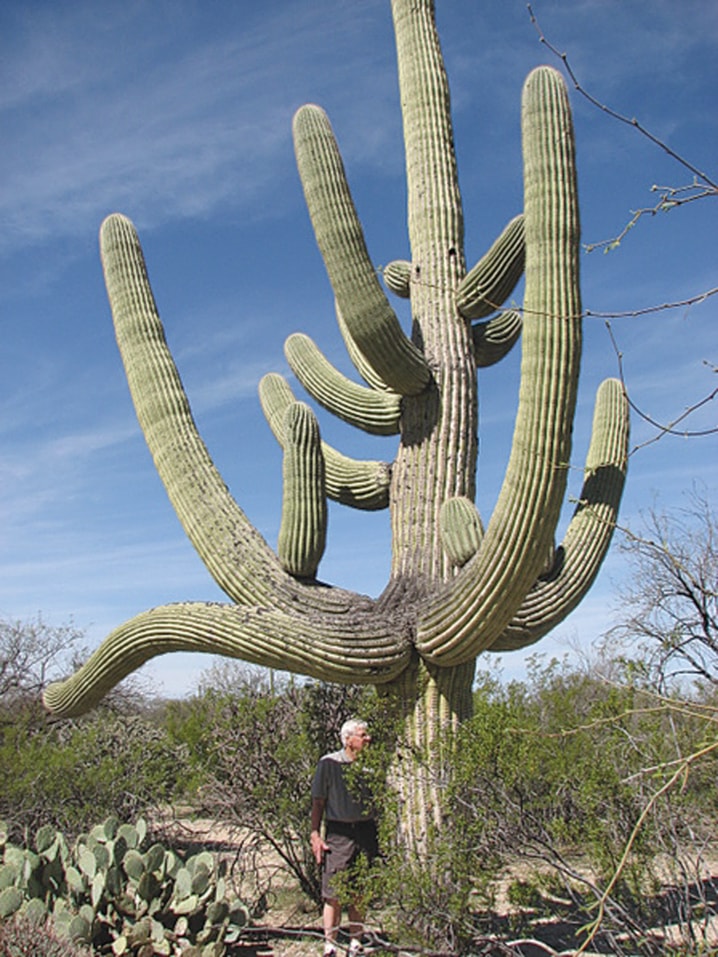I have been lucky to escape the Alberta winter this week to hike in the Arizona dessert near the Mexican boarder.
It is a ponderous landscape with low mountain ranges, flat valley floors, deeply carved canyons and dry river beds.
The plants on the surface are unfriendly, covered in prickly hairs, spiky spines, and skin tearing thorns. Their insides are another matter. They are as soft and soothing as a breeze under the scorching sun on a desert afternoon.
The first lesson I learned in the desert is don’t touch. I am a tactile person.
I love the tenderness of flower petals, the caress of leaves and rough textures in bark.
There was a harmless looking seed pod, shrivelled up, about the size of my thumb nail, causally lying next to a prickly pear cactus (opuntia spp). I picked it up and rolled it around in my fingers. It was light, wrinkled like a wise woman’s face.
Stepping away from the cactus, I felt something on the toe of my shoe. It was a grey horny, claw type thing! I pried it loose and put it in my pocket. With my hand in my pocket, my fingers felt like they were covered in Velcro, catching on the fabric. Each movement of my hand caused sharp little stabs in my fingers.
Examining my fingers in the sun (and it is bright), tiny hairs were embedded all over my fingers. They were too fine for tweezers to pull them out. Soap and water didn’t work. Finally, a fellow herbalist recommended dripping wax over the hairs. When the wax cooled, and I pulled it off, the hairs went with it.
I was then given a special tool for picking up prickly pear seed pods. It’s like a large pair of tweezers. To get at the pods tasty sweetness, skewer the pod and roll it over an open fire burning off the pesky hairs. Sort of like roasting marshmallows desert style. Only the pods are high in vitamin C and bioflavonoids.
The cacti are an amusing cast of characters to wander through. My favourite is the saguaros, the classic John Wayne cactus. They are tall, very tall, and have arms, many arms which reach up to the sun.
They grow in clusters up hill sides or stand out like scare crows in the flat expense of the valleys. Many are very old, 300 years or more.
They witnessed the Calvary arrive here in 1865 a 100,000 soldiers strong to conquer the 3,000 Apaches. In 1885, with only 100 Apaches left, the calvary pulled out.
Influx of soldiers, their families and horses changed this desert landscape. Much of what is now desert was once grasslands. Overgrazing during the Indian wars disturbed the fragile ecology of this land, the grasses receded and the desert plants moved in.
The thorny mesquite (prosopis spp.) tree is one of those plants. The mesquite has a gnarled look to it. It is not the kind of tree that invites one to sit in its shades.
Being a desert tree, it makes few leaves. Leaves transpire water as well as collect sunlight. As there is too much sun light in the desert and too little water, being a well leaved tree is a disadvantage. The leaves it does have are pretty, kind of feathery, a contrast to its overall grumpy appearance.
Like the cacti, the mesquite also stores life giving water, in its resin. To collect the resin, walk through a mesquite grove, and break off a few lower branches.
Return in a couple days, and chip off the gum, it appears in the shape of tears which has wept into the wound where the branch was torn.
Mix the gum with water in a bottle and shake until the gum dissolves. This gooey substance soothes dry parched throats and is a cooling wash for a dry, chapped skin.
In the morning, I love walking in the desert. It is a quiet place.
Still. Even with its prickly plants and stinging, biting animals (namely snakes and scorpions) there is something very gentle about the desert. Perhaps it is because to grow here requires time and perseverance.
It’s like the whole desert is waiting, for the moment when the blue sky becomes grey and the rain begins.
Herbs for Life is written by Abrah Arneson, a local clinical herbalist. It is intended for information purposes only. Readers with a specific medical problem should consult a doctor. For more information, visit www.abraherbalist.ca. Arneson can be reached at abrah@shaw.ca
